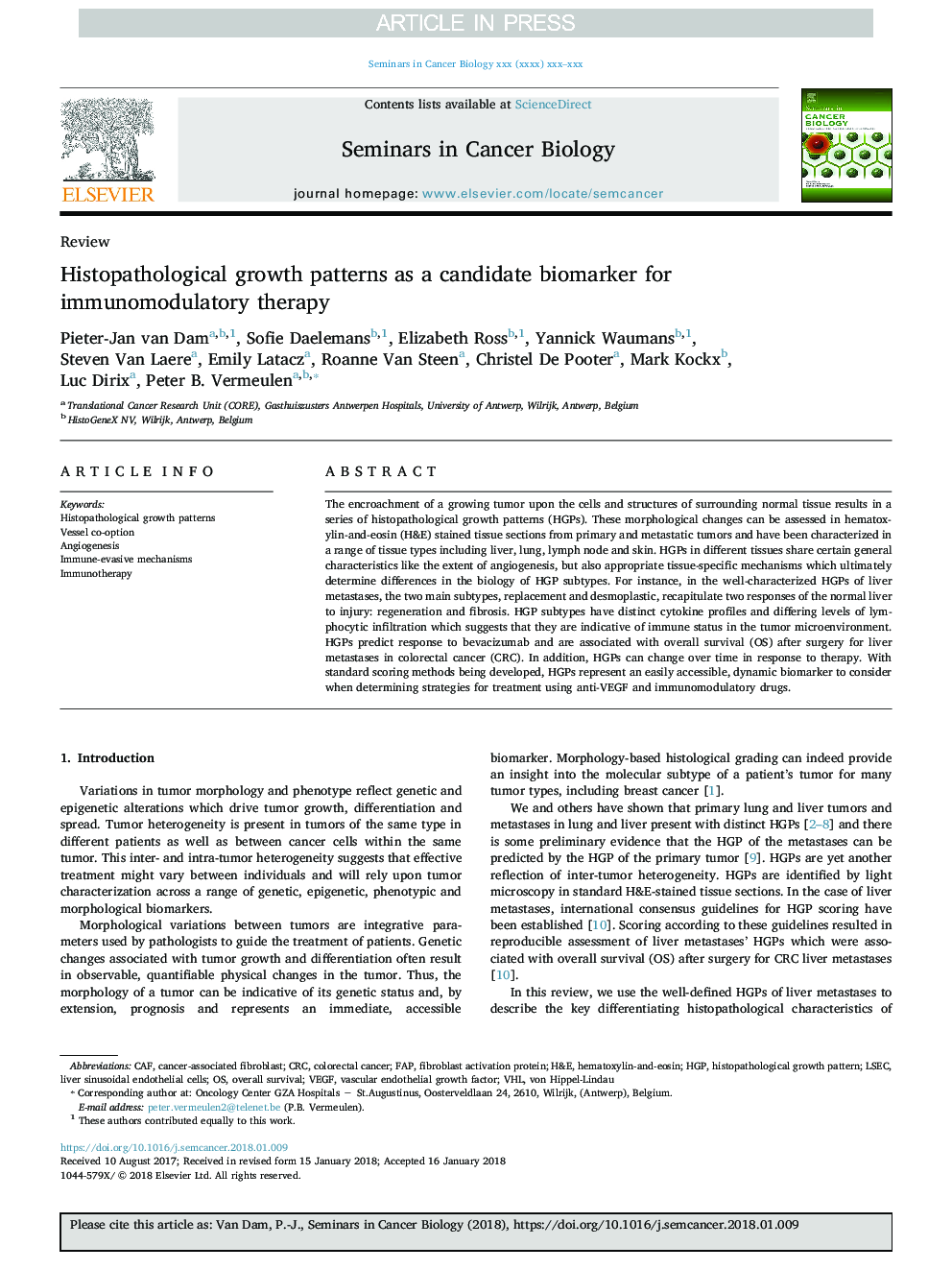| Article ID | Journal | Published Year | Pages | File Type |
|---|---|---|---|---|
| 10156989 | Seminars in Cancer Biology | 2018 | 8 Pages |
Abstract
The encroachment of a growing tumor upon the cells and structures of surrounding normal tissue results in a series of histopathological growth patterns (HGPs). These morphological changes can be assessed in hematoxylin-and-eosin (H&E) stained tissue sections from primary and metastatic tumors and have been characterized in a range of tissue types including liver, lung, lymph node and skin. HGPs in different tissues share certain general characteristics like the extent of angiogenesis, but also appropriate tissue-specific mechanisms which ultimately determine differences in the biology of HGP subtypes. For instance, in the well-characterized HGPs of liver metastases, the two main subtypes, replacement and desmoplastic, recapitulate two responses of the normal liver to injury: regeneration and fibrosis. HGP subtypes have distinct cytokine profiles and differing levels of lymphocytic infiltration which suggests that they are indicative of immune status in the tumor microenvironment. HGPs predict response to bevacizumab and are associated with overall survival (OS) after surgery for liver metastases in colorectal cancer (CRC). In addition, HGPs can change over time in response to therapy. With standard scoring methods being developed, HGPs represent an easily accessible, dynamic biomarker to consider when determining strategies for treatment using anti-VEGF and immunomodulatory drugs.
Keywords
Related Topics
Life Sciences
Biochemistry, Genetics and Molecular Biology
Biochemistry
Authors
Pieter-Jan van Dam, Sofie Daelemans, Elizabeth Ross, Yannick Waumans, Steven Van Laere, Emily Latacz, Roanne Van Steen, Christel De Pooter, Mark Kockx, Luc Dirix, Peter B. Vermeulen,
